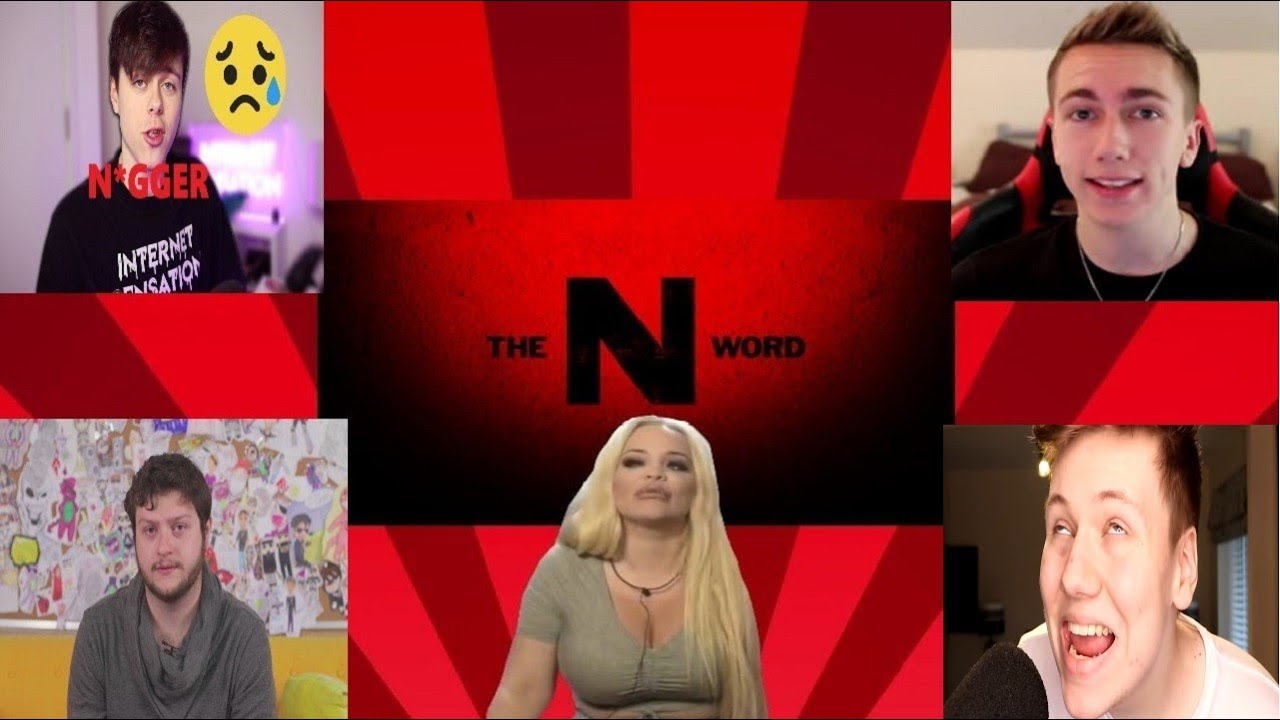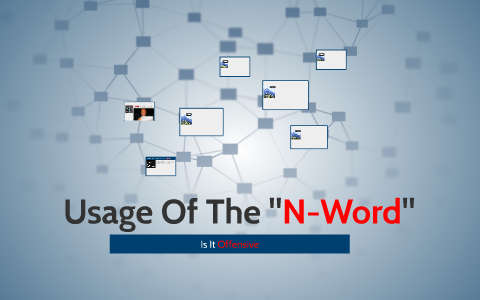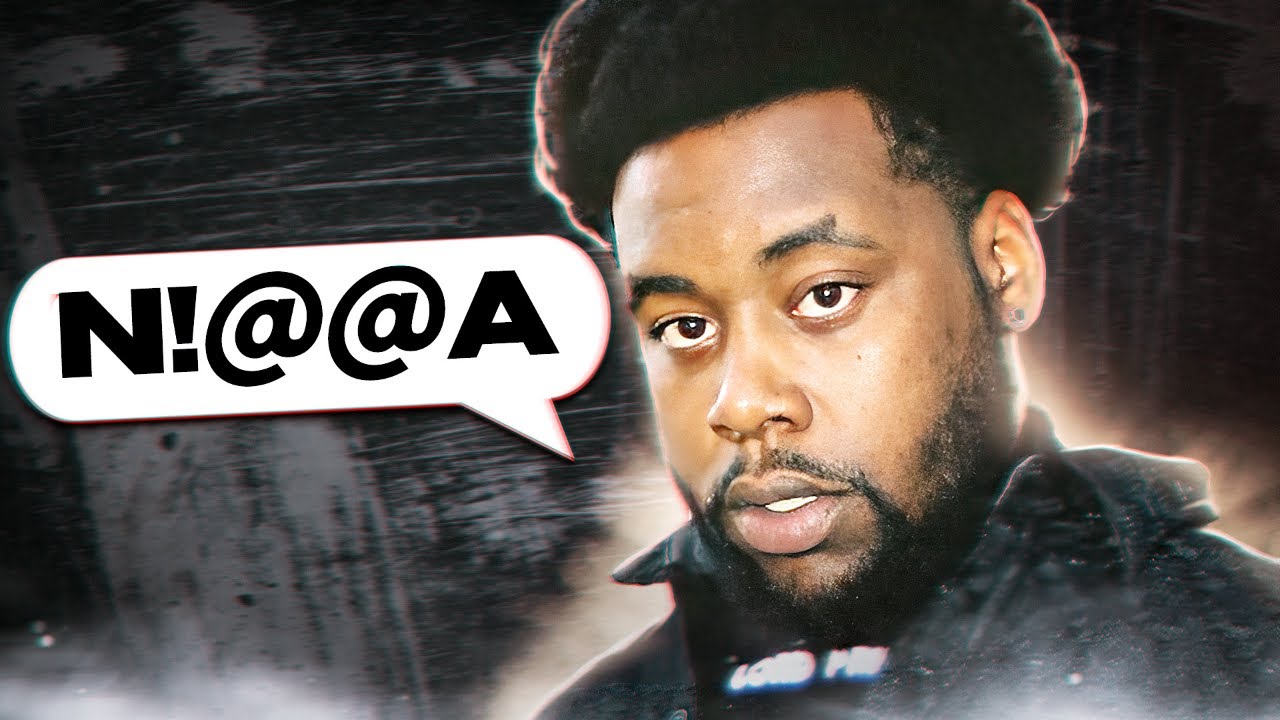In the vast landscape of online content, YouTube stands out as a platform with specific rules and guidelines that creators must follow. The site's community guidelines are crucial not just for maintaining a safe and respectful environment, but also for ensuring that users can engage with content meaningfully. Among the many sensitive topics addressed, the use of racial slurs, particularly the N-word, has sparked considerable debate. This post aims to dive into YouTube's regulations surrounding this term while providing context to better understand the platform's stance.
Historical Context of the N-Word

The N-word carries with it a history that is deeply interwoven with themes of racism, discrimination, and social injustice. Originally derived from the Latin word “niger,” meaning black, the term has evolved into a derogatory slur used predominantly against Black individuals. Its usage can evoke feelings of pain and division due to its historical association with slavery, Jim Crow laws, and systemic racism.
To grasp the weight of this word, it’s essential to explore its legacy:
- Slavery Era: During the transatlantic slave trade, Black people were dehumanized and treated as property. The N-word was a tool used by slave owners to reinforce hierarchy and racial superiority.
- Jim Crow Era: After the Civil War and the abolition of slavery, the N-word continued to be used in the context of segregation and discrimination, further embedding racial divides in society.
- Civil Rights Movement: As activists fought for equality, the N-word became a symbol of oppression. Its reclamation by some within the Black community sought to strip it of its derogatory power, although this remains a contentious issue.
In recent times, the N-word has sparked a complex dialogue. Some artists, particularly in the hip-hop and R&B genres, have chosen to reclaim the term, using it among themselves in a different context. This reclamation can be interpreted as an act of empowerment, seeking to change the narrative around a word that has inflicted harm for generations.
However, the word's usage remains layered and problematic; many feel it should never be uttered outside the Black community. This perspective is rooted in the idea that those who have not experienced the same historical and cultural context should refrain from using a term that embodies centuries of violence and oppression. This raises important questions about who gets to use the word and in what context, which is often a pivotal point in discussions surrounding race and language today.
As content creators navigate their expression on platforms like YouTube, they must be particularly aware of these historical significances. YouTube's content guidelines reflect this sensitivity and aim to prevent harm by regulating the usage of such language. By understanding the historical context of the N-word, creators can better grasp why
Also Read This: How to Turn Off YouTube Mixes and Enjoy Personalized Recommendations
3. YouTube's Policy on Hate Speech

YouTube's stance on hate speech is quite clear and firm. Their Community Guidelines state that hate speech is strictly prohibited on the platform. This means any content that promotes violence or hatred against individuals or groups based on attributes like race, ethnicity, or sexual orientation falls under this umbrella. So, where does the N-word fit into this framework?
The N-word has a long, painful history tied to racial discrimination and oppression. Because of this, its use in any derogatory context can easily trigger YouTube's policies on hate speech. If someone were to use the N-word to insult, demean, or incite violence against individuals of African descent, that content can be flagged and penalized. YouTube employs both automated systems and human reviewers to monitor this kind of behavior, which highlights their commitment to maintaining a safe space for all users.
YouTube also emphasizes context. Simply put, not all uses of a word are the same. A music artist might use the word in a song with a powerful message against racism, while someone else might use it in a harmful way. This is where things get nuanced.
Importantly, content creators are responsible for the material they upload. This includes understanding the implications of their word choices. Violation of YouTube's rules on hate speech can lead to a variety of penalties, ranging from video removal to account termination. Thus, it's crucial for creators to stay informed and cautious about their language.
In summary, while YouTube allows for free expression, there are significant restrictions in place regarding hate speech, which include the N-word when used in a harmful context. If you're a content creator, being aware of these rules is vital to ensure your content doesn't violate guidelines and face repercussions.
Also Read This: How to Block Access to the YouTube Website on Any Device
4. What Turns the N-Word into Hate Speech?

The determination of whether the N-word is classified as hate speech rests heavily on context, intent, and usage. There are several factors that play into this, and understanding them can help differentiate between acceptable and unacceptable use of the word.
- Context: The surrounding situation and how the word is used matter greatly. For example, it can be acceptable in lyric form within a musical context, especially if the intent is to reclaim or criticize its historical use. However, in casual conversation or derogatory speech, it likely crosses into hate speech territory.
- Intent: What is the speaker's intent behind using the word? If the purpose is to insult, demean, or instigate violence against a particular group, it is considered hate speech. However, if it’s part of a historical or cultural discussion aimed at educating others about its implications, it's approached very differently.
- Audience: The audience receiving the message can also change the interpretation. A word that might be reclaimed by the Black community when used among themselves can be completely inappropriate if spoken by someone outside that community, altering its impact and reception.
- Content: The overall content of the video or communication plays a vital role. If the surrounding dialogue is hateful or harmful, the use of the N-word is much more likely to be seen as hate speech.
In essence, whether the N-word constitutes hate speech depends on its usage. Recognizing these factors helps clarify the complexities of language and societal reactions, encouraging responsible communication and fostering understanding. As a content creator or consumer, being aware of these nuances will guide you in determining the appropriateness of language and help navigate the often tricky landscape of online platforms like YouTube.
Also Read This: Understanding YouTube Videos Turning Black: Causes and Fixes
5. Consequences of Violating YouTube's Guidelines
When it comes to using the N-word on YouTube, the consequences for violating the platform's guidelines can be quite severe. YouTube has established a set of community guidelines designed to maintain a safe and respectful environment for its users. When these rules are broken, the repercussions can extend beyond just a slap on the wrist.
Here’s a breakdown of potential consequences:
- Content Removal: The most immediate consequence is the removal of the video in which the slur is used. This can happen even if the word is mentioned in a way that the creator believes adds context or is used for educational purposes.
- Channel Strikes: YouTube employs a three-strike policy. If your channel receives a strike for using hate speech, subsequent strikes can lead to more severe actions, including channel termination.
- Monetization Disabled: Creators who rely on ad revenue can find their monetization privileges taken away. This can be particularly damaging for those who depend on income from their content.
- Permanent Ban: Repeated violations can result in a permanent ban from the platform, effectively shutting down a creator's ability to share content with their audience.
In addition to these tangible consequences, there’s the larger issue of reputational damage. Creators who violate these guidelines risk alienating their audience and potentially losing followers who may not want to support someone that engages in controversial or offensive language.
It’s crucial for creators to fully understand these potential repercussions not just for themselves, but for the audience they engage with. By adhering to YouTube's community guidelines, creators can contribute to a more respectful online environment while also protecting their channels and livelihoods.
Also Read This: Is NoteBurner YouTube Music Converter Safe to Use? A Comprehensive Review
6. Community Reactions and the Impact on Creators
The community's reaction to the use of the N-word on YouTube is a mixed bag, often revealing the complexities of race, culture, and context in digital spaces. When a content creator uses or is accused of using this word, the backlash can be swift and intense.
Here are some common reactions from the community:
- Support for Accountability: Many viewers believe that YouTube should hold creators accountable for using hateful language. They argue that this not only affects the creators' image but also impacts the larger community by perpetuating harmful stereotypes.
- Calls for Contextual Understanding: Conversely, some argue that context matters. They contend that in certain artistic or educational formats, the use of the word can be critical for discussion and understanding, especially in historical or cultural contexts.
- Community Division: The reactions can also lead to polarized opinions, dividing audiences. Some may vehemently defend the creator, arguing for free speech, while others will demand accountability, stirring up heated debates within comment sections and on social media.
The impact on creators is significant as well. Many face the challenge of walking a tightrope between creative expression and potential backlash from the community. This balance can lead to self-censorship or, conversely, a rebellion against the perceived restrictions imposed by guidelines or audience expectations.
Ultimately, how a creator navigates these discussions can shape their career trajectory. Engaging thoughtfully with their audience about these issues, building a nuanced understanding, and promoting respectful dialogue can help creators foster a more engaged community while avoiding the pitfalls associated with the missteps of using offensive language.
Also Read This: How to Upgrade to YouTube Premium: Simple Steps for Better Features
7. Best Practices for Content Creators on YouTube
When it comes to navigating sensitive topics like racial slurs, including the N-word, content creators on YouTube face a significant challenge. Understanding the platform's guidelines and the broader implications of the language we use is crucial. Here are some best practices to help creators remain respectful and in compliance with YouTube's rules:
- Know the Guidelines: Familiarize yourself with YouTube's community guidelines. They explicitly state that hate speech is not tolerated. Make sure to read up on the specifics regarding language and context.
- Be Mindful of Context: If discussing the N-word, it's important to consider the context in which you use it. Educational or historical discussions may be more acceptable than casual usage or jokes.
- Consider Your Audience: Remember who you are creating content for. Tone matters, and certain audiences may react differently. What’s acceptable in one community might not be in another.
- Provide Context: If you must use the word for the sake of discussion or commentary, provide ample context. Explain why it’s relevant and ensure that your viewers understand your intent.
- Engage with Your Community: Open a dialogue with your audience about sensitive language. Encourage them to share their thoughts, which can provide insights into how your content is received.
- Use Alternatives When Possible: Instead of using the N-word outright, consider using alternatives or euphemisms. It shows respect for the sensitivities around the term.
- Educate Yourself: Understanding the historical and cultural implications of words is essential. Continuous learning about the impact of language can better inform your content creation.
- Stay Updated: Platforms and societal norms evolve. Regularly review YouTube’s policies and stay abreast of current conversations about race and language to ensure your content remains relevant and respectful.
By implementing these best practices, content creators can foster a respectful environment while minimizing the risk of violations that could lead to content removal or channel demonetization. Remember, our words carry weight, and as creators, we have the power to influence conversation and promote understanding.
8. Conclusion: Navigating Sensitive Language on YouTube
Navigating sensitive language on YouTube, especially regarding slurs like the N-word, is a nuanced endeavor that requires careful consideration. As we've discussed, YouTube is committed to creating a safe and inclusive environment for its users, and language plays a critical role in that mission. Content creators have a responsibility not just to adhere to the platform's rules but also to engage thoughtfully with the conversations surrounding race, culture, and identity.
In conclusion, here are some key takeaways for creators:
- Understanding Matters: The first step to respectful content creation is understanding the words we use. This includes their history, the emotions they evoke, and their impact on various communities.
- Prioritize Awareness: Being aware of the cultural significance of the N-word and the reactions it elicits is crucial. Always weigh the importance of your message against the potential harm of the language you choose.
- Engage Responsibly: As you create content, engage with your audience on these issues openly. This not only fosters a sense of community but also promotes shared understanding.
- Encourage Discussion: Use your platform to spark conversation rather than silence it. Discussing sensitive topics can lead to greater understanding among viewers and foster a positive change.
Ultimately, sensitive language is not just about avoiding certain words; it’s about fostering an environment of respect and understanding. By being conscientious and informed, content creators can contribute to important discussions while ensuring their channels thrive in a safe and supportive setting.
 admin
admin








